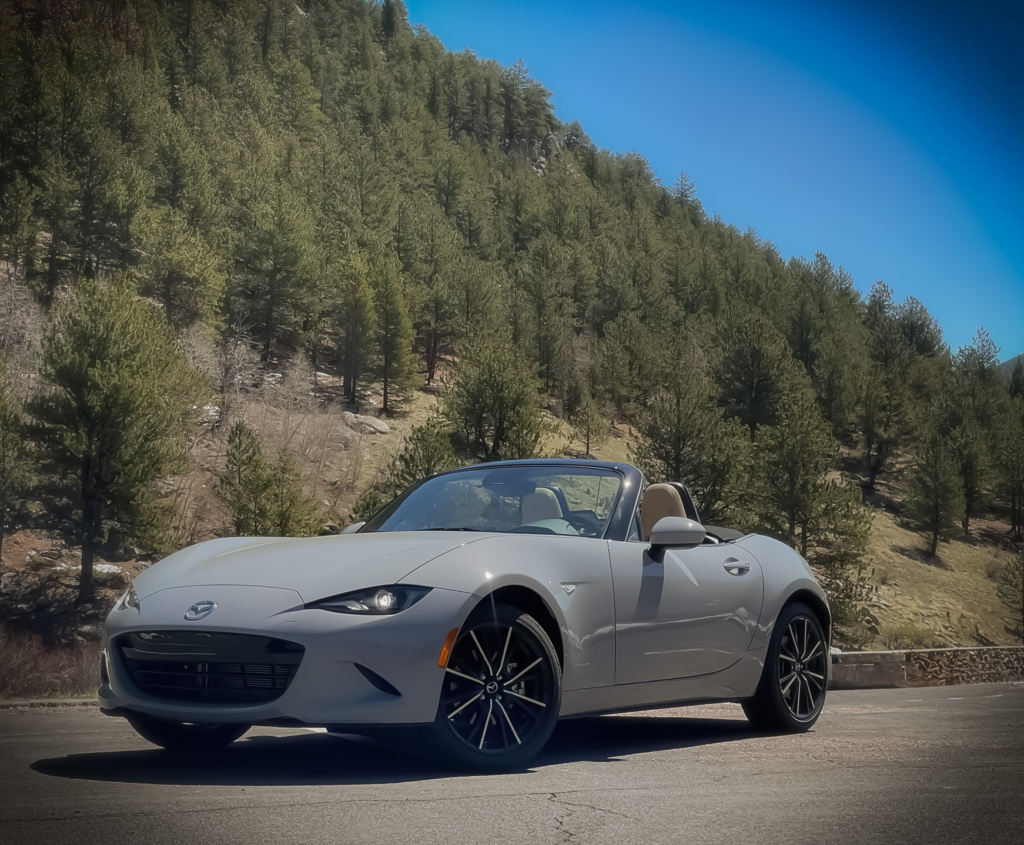
The Mazda MX-5 Miata has to be an incredible car; in both a declarative and exclamatory sense. The sporty roadster has developed an incredibly strong following over the past 35 years (and we can expect a fifth generation soon), yet, on the business front, its contracting market space tolerates zero mistakes.
The Miata’s commitment to simplicity through design is most evident in its physical size, measuring just 154 inches in length and weighing only 2,400 pounds. The long hood, wide stance, and cab-rearward profile are classic roadster proportions, and premium details, such as the LED slim headlights, 3D-effect LED taillights, and gloss-black roll hoops, showcase the Miata’s mainstream-plus aspirations. Put it all together, and the design is an honest representation of the experiences that lie ahead.
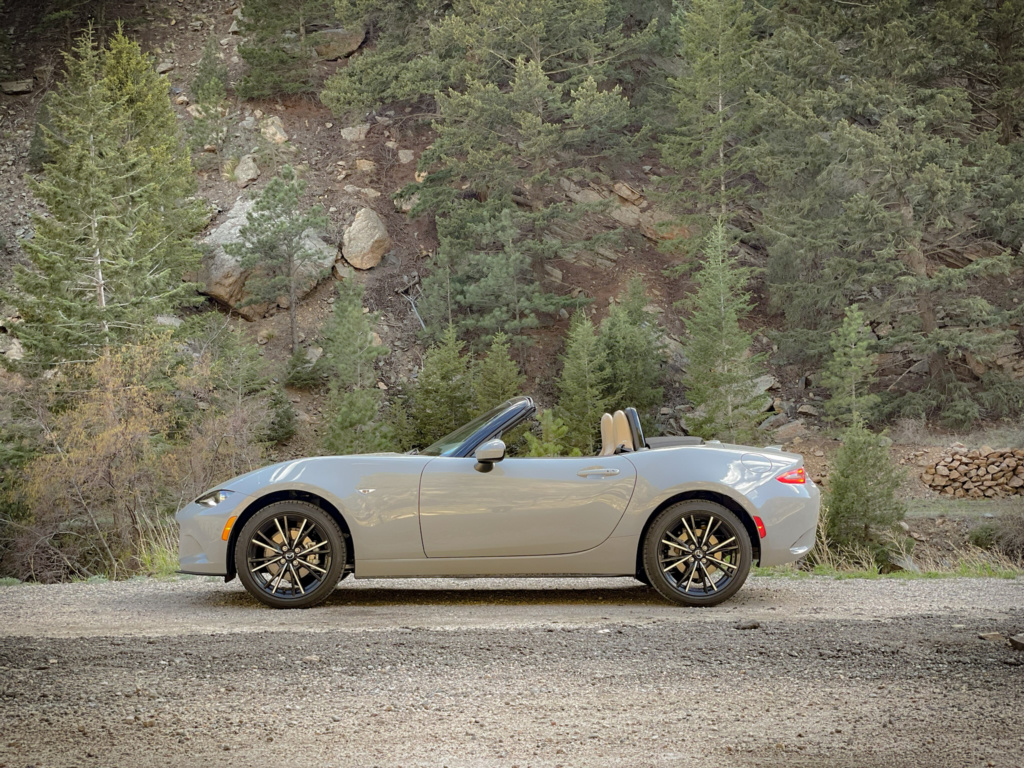
Like the exterior, the design is without any unpleasantness. Its compact cabin makes the most of its space. And while it may still be too tight for larger-framed adults, the seat and steering wheel offer a wide range of adjustability, allowing most drivers to find the ideal position for comfort and support. Practical features such as an infotainment system that can be controlled via the touchscreen and a physical knob, an audio system with a console-mounted volume dial, and HVAC controls that can be quickly adjusted, are easy to appreciate everyday. It also incorporates impressive styling details – most notably the body-color upper door (and dash corner) trim, and excellent part and panel fit-and-finish.
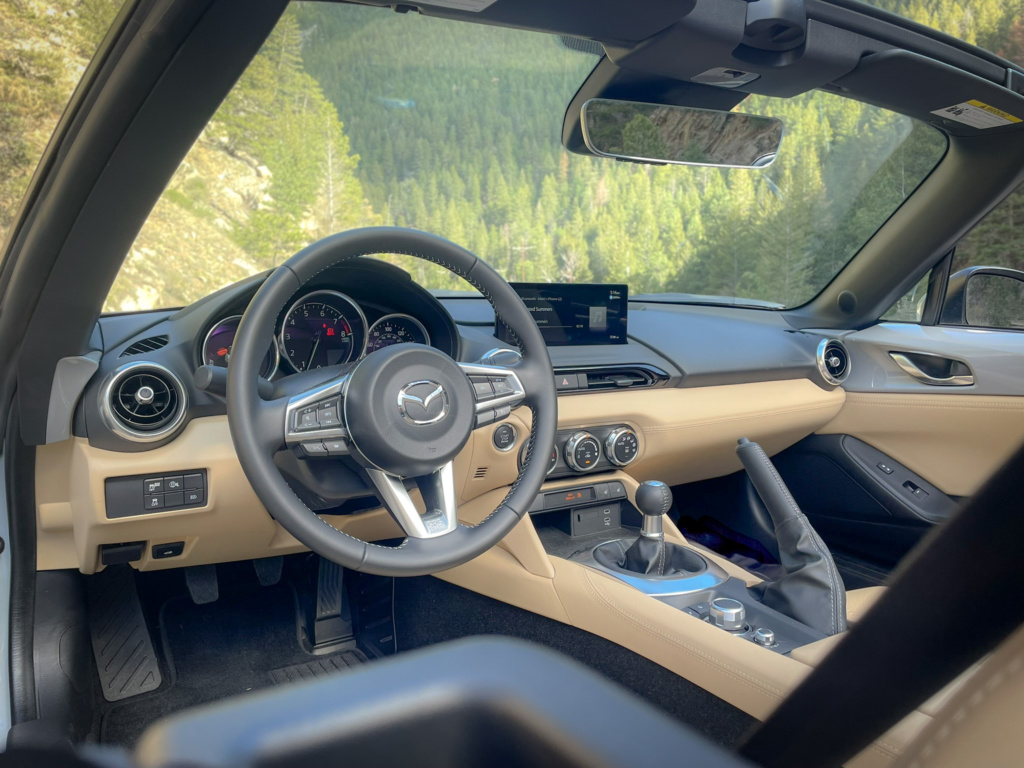
The interior’s compact space has, unfortunately, led to the elimination of the glove box. To make cabin storage matters worse, there are just a couple of cubbies large enough for your iPhone or a large wallet. The trunk is, thankfully, large enough to fit a week’s worth of groceries.
The driver is treated to a trio of separated gauge pods arranged in a traditional manner, with the tachnometer front and center. The left pod is a digital display, and together, their designs provide a familiar and upscale design.
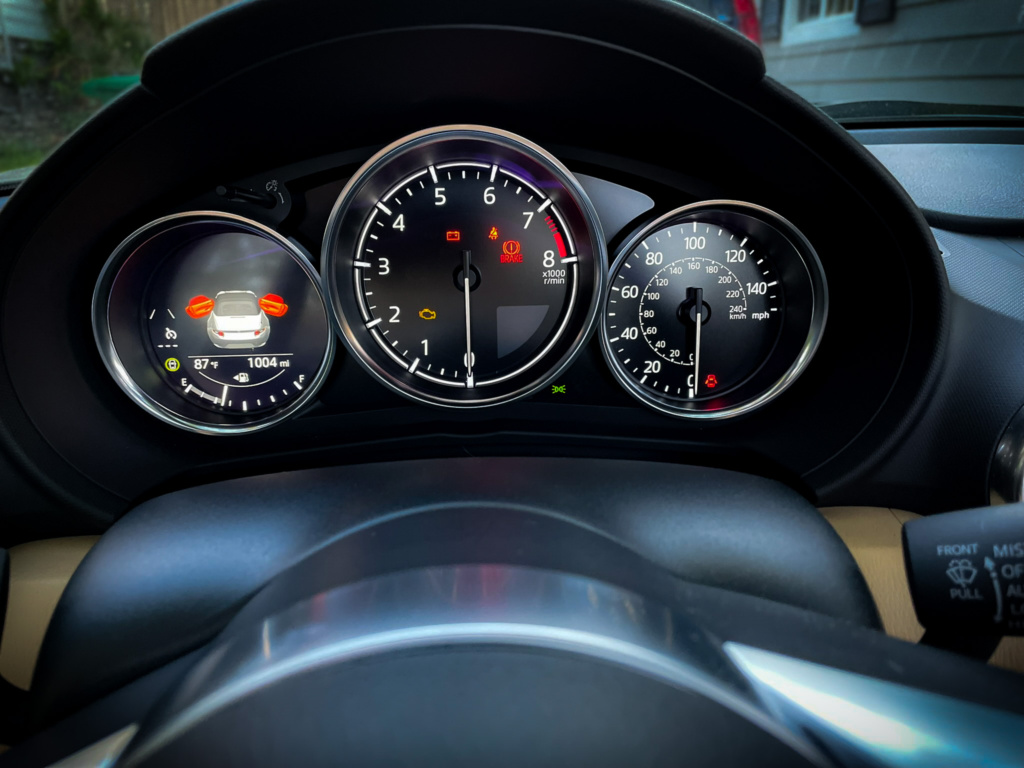
Pushing the Engine Start button wakes the relatively large, longitudinally arranged engine. Vibrations are lightly filtered and never objectionable; however, the engine can sound a bit industrial until it’s warm. The naturally aspirated 2.0-liter engine produces rather modest peak numbers: 181 horsepower and 151 pound-feet of torque, but its strong low-RPM pull and steadily rising power curve, extending up to its 7,000+ RPM redline, make for an incredibly usable speed range while straight-line acceleration never feels lacking.
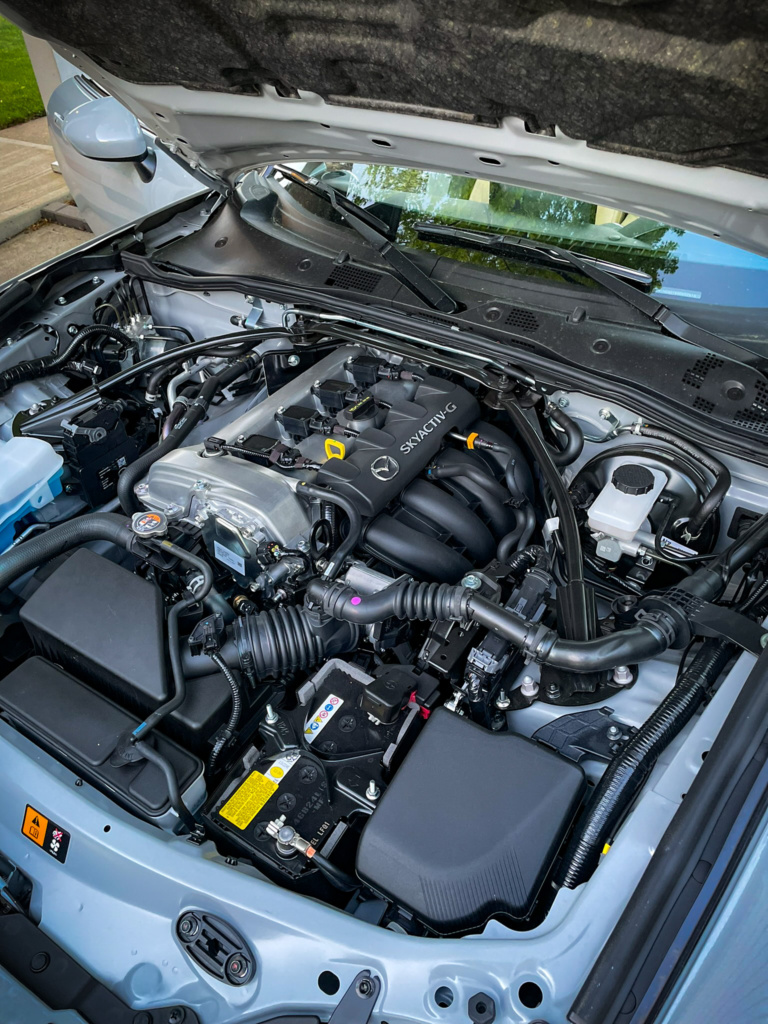
Just like the engine, the manual transmission contributes to an enthusiast-approved experience. In combination with excellent throttle tip-in control, the well-balanced clutch pedal effort, and closely spaced gear position gates, this six-speed proves what a good transmission (with its good-feeling leather-wrapped ball shifter) can provide in terms of driver engagement. And better yet, without being a burden in everyday use.
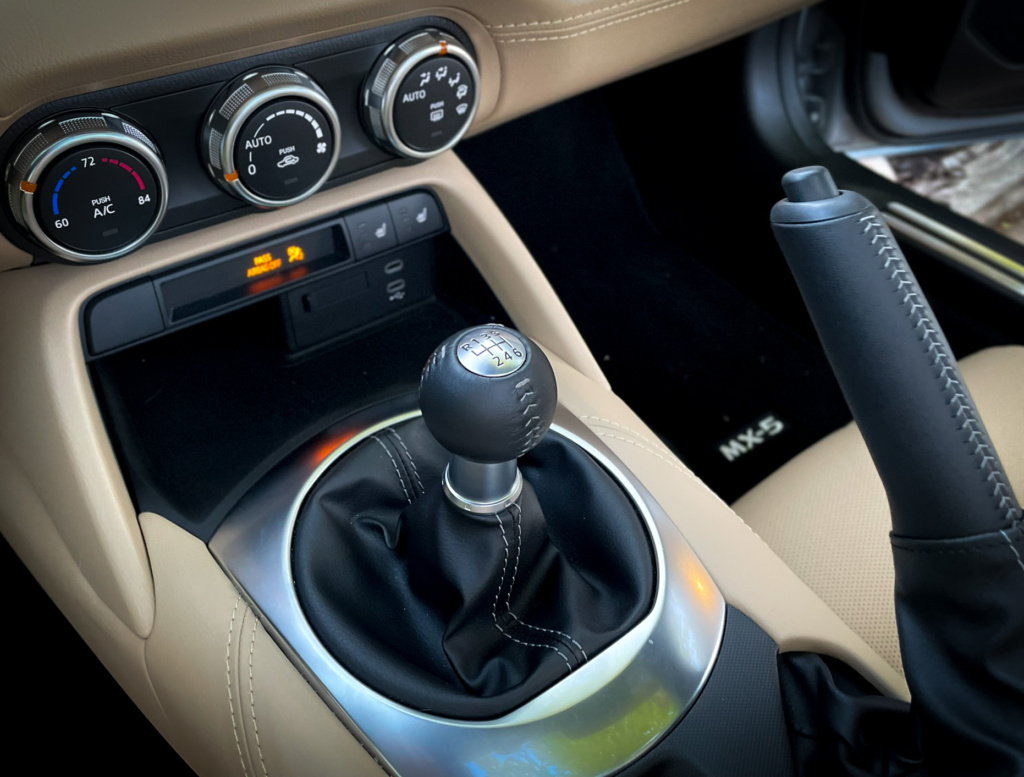
Every part contributes to the Miata’s 50:50 weight distribution and low center of gravity, and the stiff chassis enables precise handling tuning. That’s why it may be surprising to spot the narrow tires and to feel the relaxed body-roll control, which ultimately lower the Miata’s overall handling limits. But out on the road, these peculiarities provide an ideal weight transfer and level of grip that let the driver gracefully play with the car’s ultimate balance. And most incredibly, this can be done without the need for an unnerving amount of risk (i.e., speed).
When it’s time to hit the highway, the Miata’s 17-inch wheels and tires with relatively tall sidewalls help the suspension soak up sharp bumps. Still, its short 91-inch wheelbase creates an additional challenge at high speed and can make for a somewhat busy ride depending on the surface.
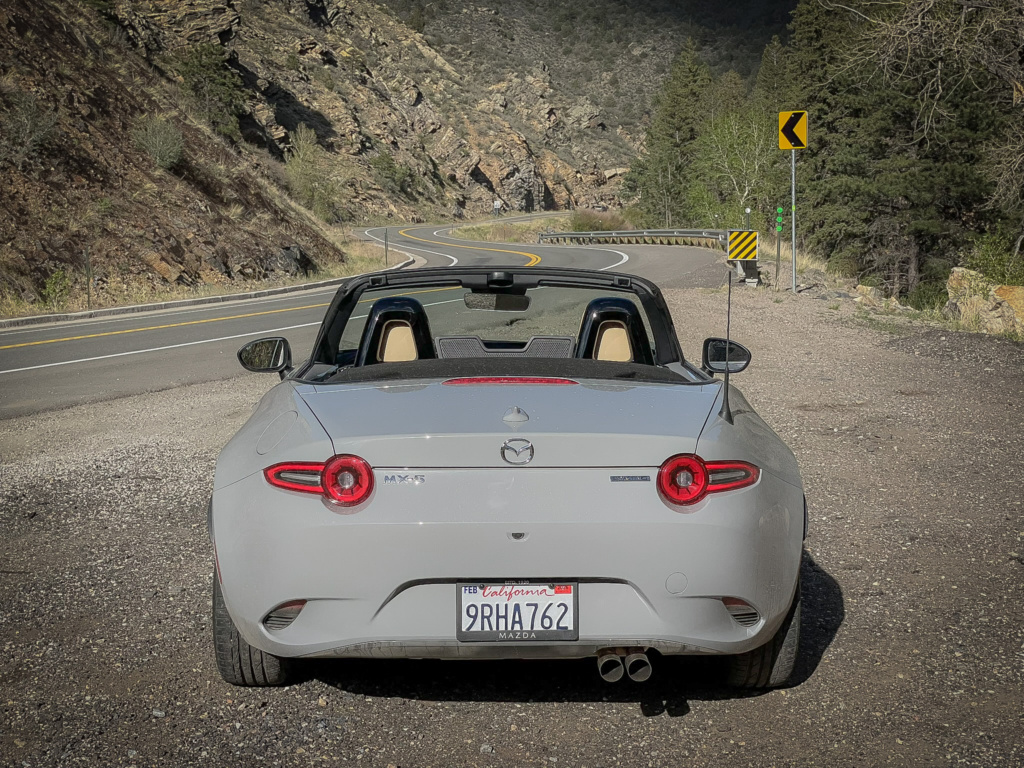
With the manually-operated fabric top closed, road noise and wind noise are tolerable, knowing full well the Miata’s light-weight mission and that the roof (and all of its sound-deadening features) is also designed to fold away neatly into a small space. In fact, its simple design also makes it incredibly easy and quick to lower or raise – far faster than anything motorized. And to counter the general noise, the Miata smartly integrates a pair of speakers in each headrest.
The Miata’s mission is narrowly focused. This will likely relegate it to serving life in a one+ vehicle household – especially in Colorado.
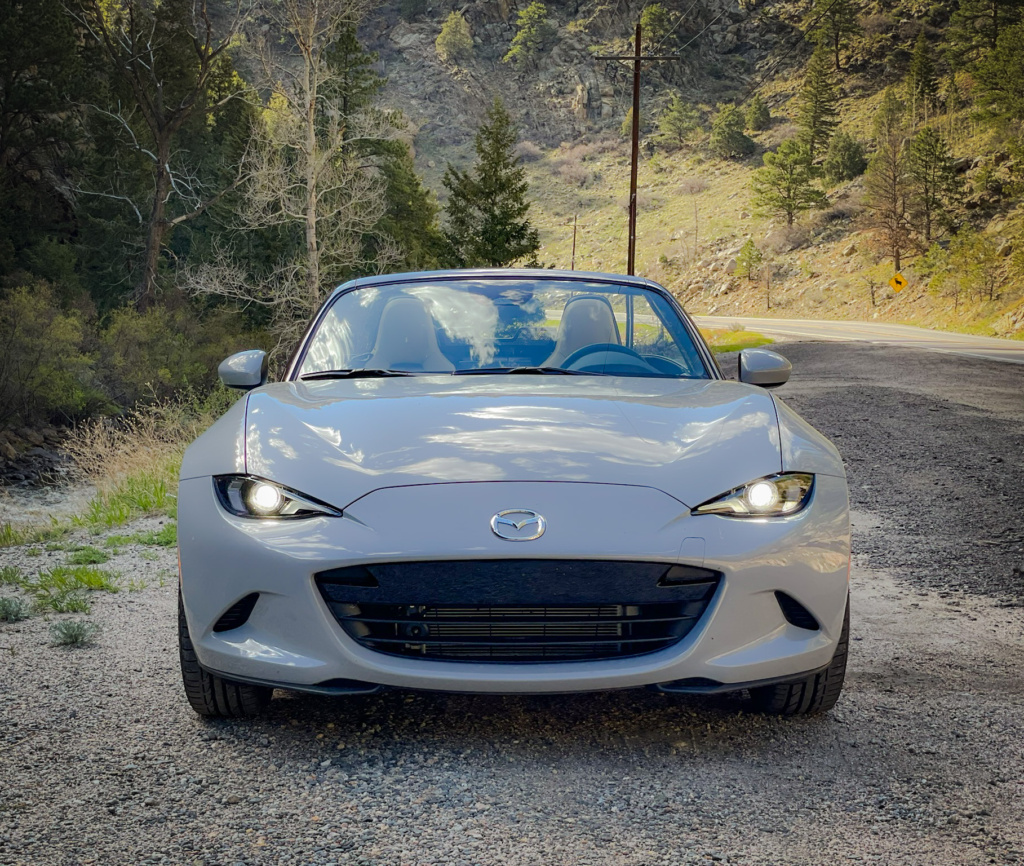
Mazda has been able to adapt the Miata’s recipe from one generation to the next, keeping it current but not bowing to the latest fashion fads or finding excuses during down-market times. Mazda stayed committed and while not everyone can use the Miata as a one-car household-vehicle, its starting price of just under $31,000 (this example, provided by Mazda at no expense to Pilgrim Motor Press, was fully equipped and checked out at about $38,000) puts it well under the price of an average new vehicle and feeling like an exceptional value.

The Mazda Miata’s simplicity in design penetrates on both, the static and dynamic fronts, and it does so with a driver-first focus. The result is a type of human-machine interface that is becoming increasingly rare. As a sports car, the Miata may not deliver in terms of specs, but in physical form, it outperforms nearly all others. In this case, seeing is believing.
